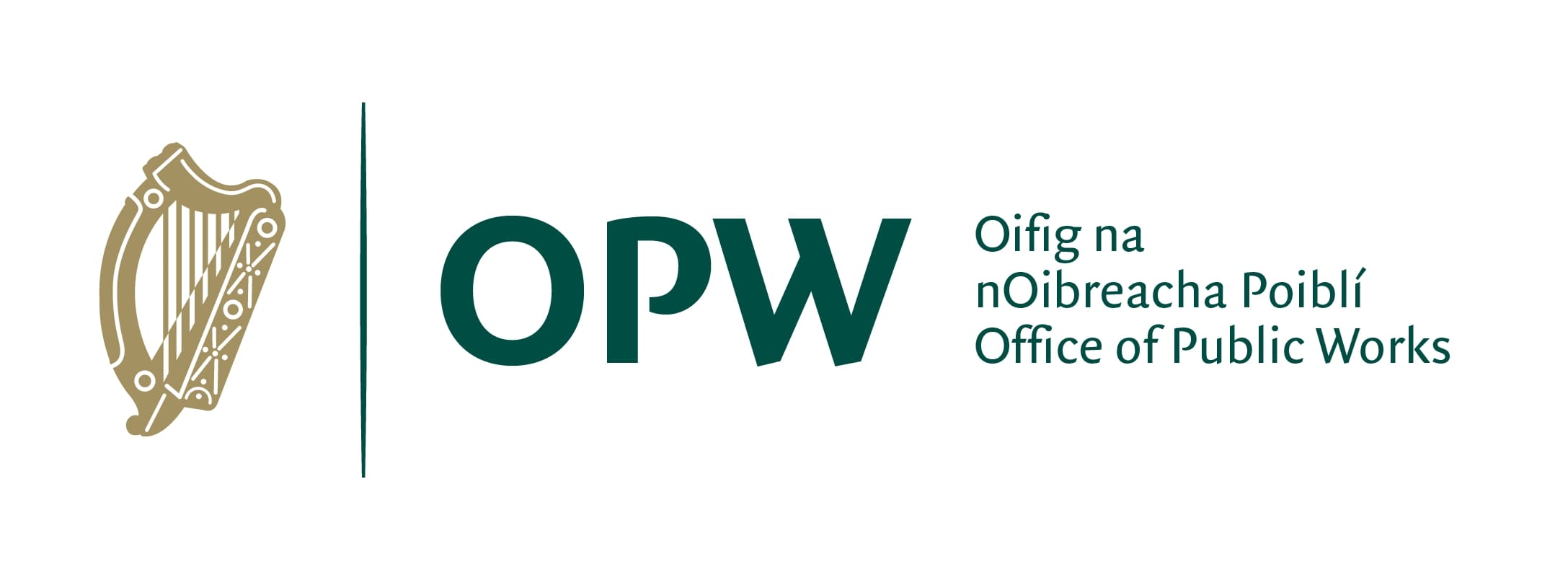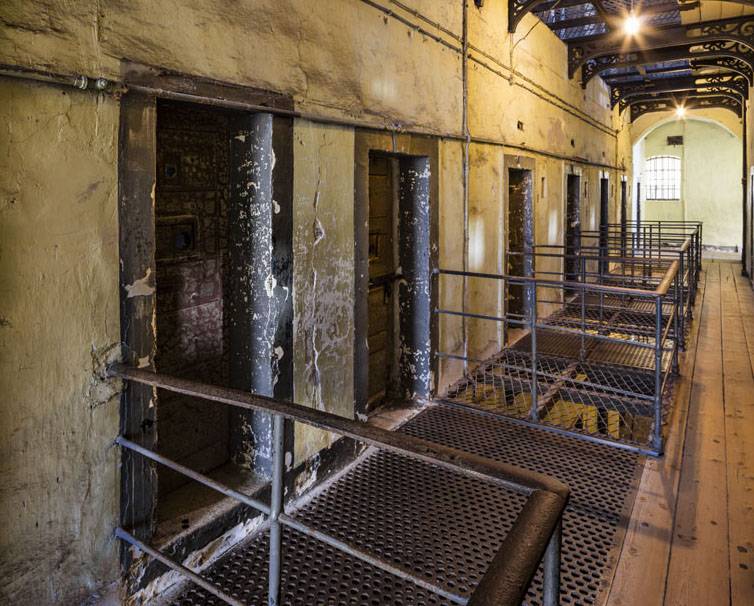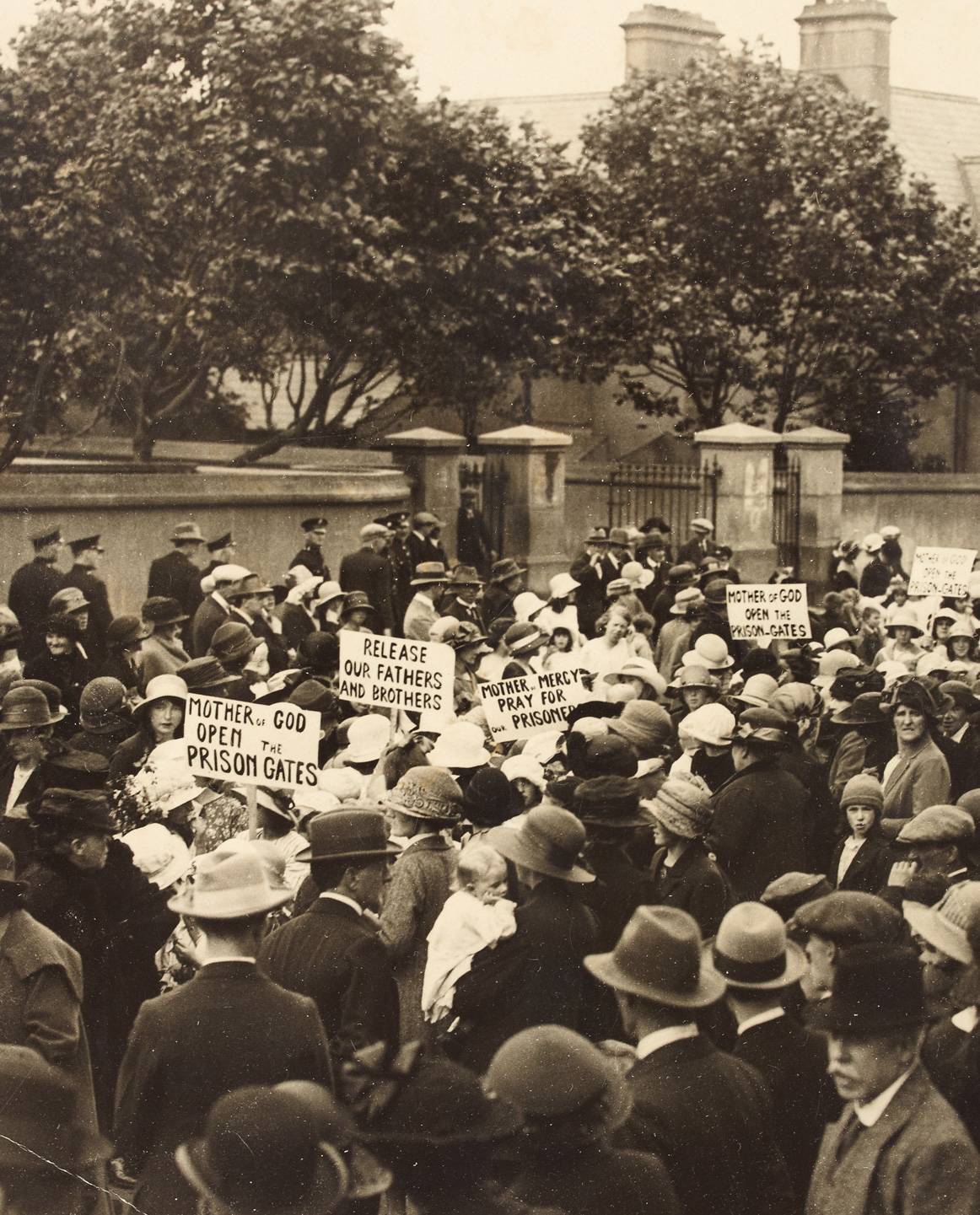1910 – 1924
The last two decades of the nineteenth century saw a decline in the prison population. The Prisons Board made the decision to close some gaols, in an attempt to save money, and Kilmainham was one of these. In 1910, those in Kilmainham were transferred to Mountjoy Prison, and a year later Kilmainham Gaol closed. It was given to the military (the British Army) for their use from then on. From the outbreak of the Great War in 1914, they used it as a military billet for new recruits, and as a military detention centre for soldiers. It was this use as a military prison which established the role of Kilmainham Gaol for the following turbulent decade in Irish history.
The Easter Rising of 1916 was devised to take place at a time when the British were distracted by fighting the Great War on the continent. Led by members of the Military Council of the Irish Republican Brotherhood, with support from the Irish Citizen Army, the Irish Volunteers, and Cumann na mBan, the rebels seized key sites in Dublin on the 24th of April 1916. It began with a reading of the Proclamation of the Republic by Patrick Pearse. Fighting lasted for six days, until the British Army suppressed the rebellion and Pearse surrendered.
James Connolly was badly wounded and brought to Dublin Castle. Patrick Pearse was brought to Arbour Hill, before transferring to where the rest of the leaders were located, in Richmond Barracks. There they were court-martialled and sentenced to death. They were transferred to Kilmainham Gaol. Here, they were visited by loved ones, and wrote their final goodbyes. It was also here that another leader, Joseph Plunkett, married Grace Gifford in the Gaol chapel the night before he was shot. Between the 3rd and 12th of May 1916, fourteen men were executed by firing squad in the Stonebreakers’ Yard of Kilmainham Gaol. Seven of them had been the signatories of the Proclamation. These were Thomas Clarke, Seán Mac Diarmada, Thomas MacDonagh, Patrick Pearse, Éamonn Ceannt, James Connolly, and Joseph Plunkett.
In the event of any of the Sinn Féin prisoners being condemned to death to-day, they will be segregated (so far as circumstances permit) and asked whether they want to see relatives or friends or chaplains; and these persons will be sent for as required by the prisoners… The whole of the visitors and friends are to be taken back to their homes before 3.30am the next day, at which time the first firing party will parade… After each prisoner has been shot, a Medical Officer will certify that he is dead, and his body will be immediately removed to an ambulance, with a label pinned on his breast giving his name. When the ambulance is full, it will be sent to Arbour Hill Detention Barracks, entering by the gate at the Garrison Chapel.
A party there will put the bodies close along side one another in the grave (now being dug), cover them thickly with quicklime (ordered) and commence filling in the grave. One of the officers with this party is to keep a note of the position of each body in the grave, taking the name from the label. A Priest will attend for the funeral Service.
The harsh treatment of the leaders of the Easter Rising, along with the martial law that followed, and later the attempts to introduce conscription among Irish men for the Great War effort, swayed public opinion dramatically. Poetry written by Pearse and Plunkett also began to become popular, and their ideas spread. Hundreds of those who had taken part in 1916 were also still imprisoned in England, where their revolutionary ideas were solidifying. When the 1918 General Election came around, Sinn Féin received huge support among voters. They refused to take their seats in Westminster and instead established the first Irish Dáil in July of 1919. This, with their declaration of independence, launched the War of Independence.
The War of Independence was fought between the Irish Republican Army and British forces. These last included the two infamously violent special units known as the Auxiliaries and the Black and Tans. Kilmainham Gaol, which had been closed since the executions of 1916, was now reopened as a military detention centre, once more to receive Republican prisoners. Harsh security was enforced there until the Anglo-Irish Treaty of December 1921, when truce negotiations achieved an amnesty.
The sense of accumulated tragedy, endless sacrifice, the never ceasing persecution of those who stand for Ireland’s freedom, has been terribly oppressive in this gloomy and evil reputed jail. The very stones of our exercise yard speak to us always of the blood that stained them in that awful week of May 1916.
The signing of the Anglo-Irish Treaty, with its concession of the six counties in Northern Ireland and its retention of the Oath of Allegiance, led directly to the Irish Civil War which broke out in June 1922. Pro- and anti-Treaty groups now organised against each other. Fighting to maintain the Treaty were the National (Free State) Army, with support from the British. Protesting against the Treaty were the Irish Republican Army, Cumann na mBan, and Na Fianna Éireann (a nationalist youth organisation).
The new Free State Army now took control of Kilmainham Gaol, and employed it for the same purpose it had been used for during the previous decade; to detain and sentence Republican political prisoners. This was demanding and painful duty for those required to act as guards, for many of their prisoners had recently been their comrades. Both men and women were held in the Gaol, including leading figures such as Maud Gonne McBride, Nora Connolly, and Eamon de Valera. The Republicans surrendered in May 1923, and prisoners began to be transferred from the now dilapidated, damp, and dark Gaol. De Valera was one of the last to leave in 1924, after which the Gaol was allowed to fall into abandonment. The official Closing Order was issued by the Minister for Justice of the Irish Free State in 1929.
The image at the very top of this page shows a group of Free State soldiers at the Gaol’s entrance.


